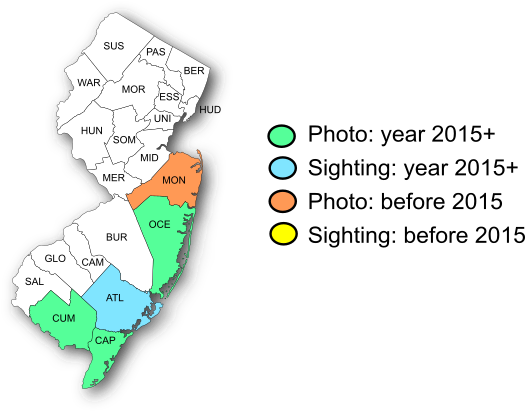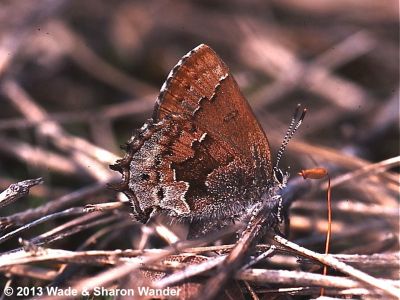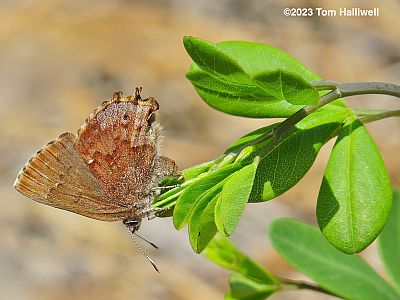New Jersey Butterfly Club
A chapter of the North American Butterfly Association (NABA)
Frosted Elfin
Callophrys irus
Identification: Very small—size of thumbnail. Almost never seen with wings open. Below: FW rather uniform reddish-brown with irregular black-and-white postmedian line. A dark blotch partially bordered with white extends across the HW. HW has whitish frosting on most of outer portion and usually has a small but distinct dark spot near the short, rounded tails. Similar hairstreaks: On Hoary Elfin entire outer portion of HW is frosted, as well as outer margin of FW. Both Hoary and Henry’s lack the dark spot near HW tails and Henry’s Elfin has more-marked contrast between light- and dark-brown areas.
NJ Status and Distribution: Resident. Classified as Threatened in NJ. Now found only in a few colonies in Cape May, Cumberland, and Atlantic counties. A small colony persisted at the Assunpink WMA, western Monmouth County, until 2003.

Habitat: Open areas, including glades within forests, and utility-line corridors, where the host plant grows.
Flight Period: Mid-April into June. Extreme dates: South Jersey: 3/22—6/15.
Caterpillar Food Plants: Wild Indigo (Baptisia tinctoria), which is a native perennial of open, often disturbed, habitats, and Wild Lupine (Lupinus perrenis) another native that grows on loose, well-drained soils. Current populations in South Jersey apparently use only Wild Indigo, and it is unknown whether former populations in North Jersey used Wild Lupine.
Overwintering Stage: Pupa.
Good Locations: None listed because of sensitivity.
Comments: Nectars mostly early in the morning and perhaps late in the day on various heath-family shrubs. Retreats to glades within woodlands at night and during windy or otherwise inclement weather. The presence of these protected areas may be an important habitat requirement.



